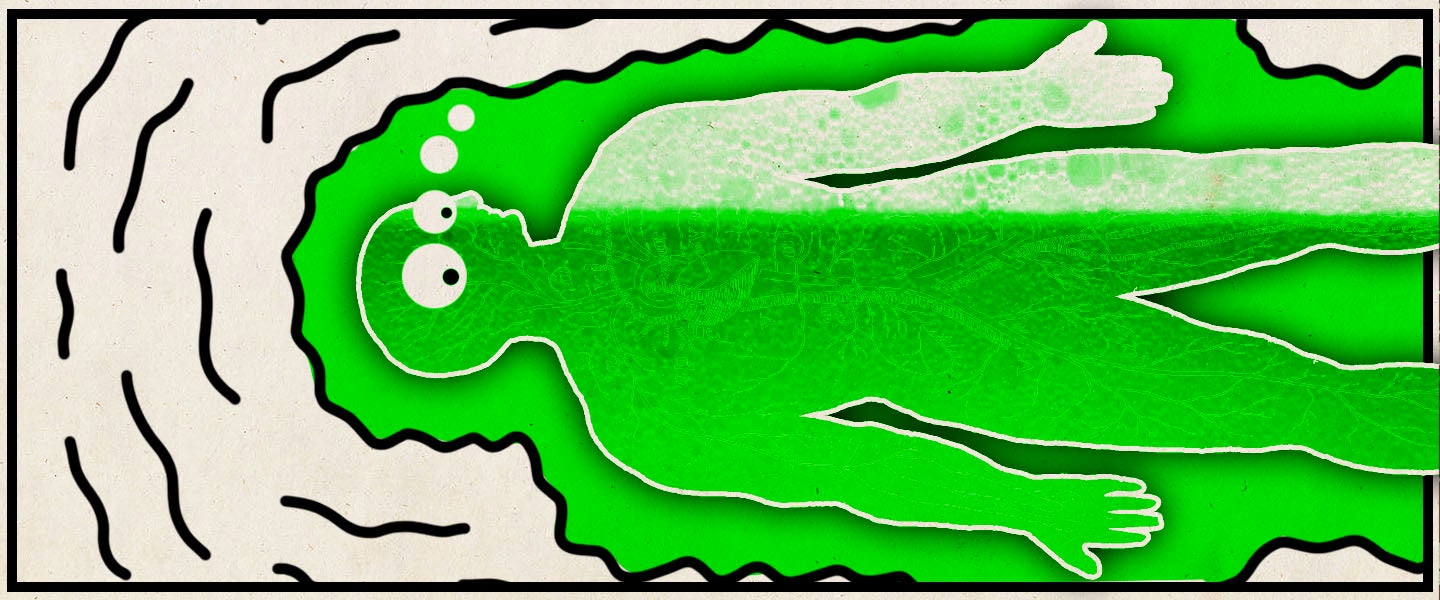
It’s St. Patrick’s Day, which means a tide of green-clad frat bros have probably already kicked down your front door and puked in your shoes. This survival guide is designed to get you through the worst day of the year in as few pieces as possible.
The human body: An inspiring biological work of art? Or a meaty sack of germs and fluids? Either way, there’s still a lot we don’t know about what goes on in there — and scientists are constantly attempting to find out more. In celebration of St. Patrick’s Day — and the fact that I’m already eight green beers deep — here are the most interesting things we learned about booze and our bodies in the last few months…
Smoking While Drinking Double-Fucks Your Brain
Smoking and drinking go together like getting blackout drunk and crying in an Uber, but new research shows that the combination also essentially melts your brain. Scientists provided some hardcore party rats with booze, smokes or both, twice a day for 28 days, and then compared their brains with the laaame control group of rats, who weren’t even given a single cig. The researchers found that the smoke-drink combo increased the levels of damaging reactive oxygen species in the hippocampus, an area of the brain associated with emotions, memories and our nervous system. Worse yet, in all the brain areas that were studied, the combination of alcohol and tobacco increased the levels of inflammation-causing cytokines more than either one alone.
All of which means everyone’s favorite pastime — getting drunk, then inhaling an entire pack of smokes — may very well be the reason none of us will remember our names when we get older.
Becoming a Mom Makes You Drink Less… But Like, Only for a Little Bit
Women typically reduce their alcohol intake after getting pregnant, but new research shows that the change is short-lived. By the time their child turns five, moms tend to revert back to their pre-pregnancy, heavy-drinking ways. In fact, 15 percent of the mothers analyzed in the study with a child aged five or older, reported binge-drinking within the past week. The research found that men, too, generally drink the same amount before and after becoming fathers.
“One of the important messages of our findings is that both men and women need to find different ways to put their brakes on their drinking during this time of life,” said lead author Rohan Borschmann in a press release. “The traditional combination of marriage, mortgage and kids no longer has any impact on men’s drinking, while motherhood only prompts women to have a brief reprieve from drinking.”
If you’ve got any suggestions for how people are supposed to survive parenting without frequently getting blackout drunk, we’re all ears, scientists.
Heavy Drinking Changes Your DNA, Making You Crave More Booze
Scientists at Rutgers University and Yale recently discovered that heavy drinking can trigger long-lasting genetic changes, which result in an even stronger craving for booze. The researchers focused on two specific genes that were previously associated with our ability to moderate our drinkin’: PER2, which drives our biological clock, and POMC, which regulates how we respond to stress. Then, they compared groups of moderate, heavy and binge drinkers, and found that both of the aforementioned genes had changed in the heavy and binge drinkers — as a result of these changes, heavy and binge drinkers experienced a greater desire for alcohol.
“We found that people who drink heavily may be changing their DNA in a way that makes them crave alcohol even more,” said senior author Dipak K. Sarkar in a press release. “This may help explain why alcoholism is such a powerful addiction, and may one day contribute to new ways to treat alcoholism or help prevent at-risk people from becoming addicted.”
In other words, as Jamie Foxx once rapped, “Blame it on the genes, got you feeling loose.” Who knew that was a real thing???
Giving Your Kid a Sip of Beer Is a Bad Idea
Not because they’re wild enough without booze in their system: Recent research shows that children younger than 14 who are allowed to sip alcohol — even only a few times a year — are more prone to becoming problem drinkers come late adolescence. “Early sipping and tasting is predicting increased drinking behavior in young adulthood,” says lead author Craig Colder in a press release. “Sipping and tasting alcohol in childhood with adult permission is associated with more frequent drinking and an additional drink per drinking episode. It’s not only how often they’re drinking and how much they’re drinking in late adolescence, but the negative consequences related to drinking increase as well, like being hungover, getting into trouble, arguing and fighting.”
The Way We Market Low-Strength Booze Just Makes Us Thirstier
For many, near beer acts as a healthier alternative to real, full-strength boozing. But rather than being marketed as such, a group of English researchers recently discovered that the marketing behind low-strength alcoholic drinks may actually encourage people to drink more. For example, they found that low-strength wines were often marketed as suitable for all occasions, with messages describing them as “lunchtime treats” or “perfect for all occasions.”
“Our findings suggest that products containing less alcohol than regular strength wines and beers may be being marketed to replace soft drinks rather than products with higher alcohol content,” said study author Milica Vasiljevic in a press release. “Marketing lower strength alcohol wine and beer as being healthier than regular strength products and suitable for all occasions may paradoxically encourage greater alcohol consumption. Thus, measures apparently intended to benefit public health, such as the wider availability of lower alcohol products may in fact benefit industry to the detriment of health.”
Christ. Can’t I just enjoy my breakfast wine in peace?

